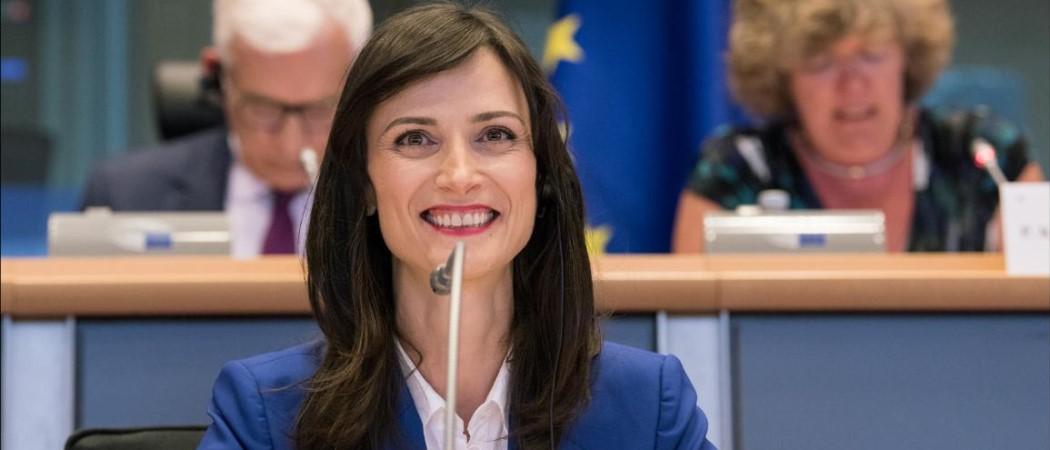Currently, it is easier for entrepreneurs to connect to investors in Silicon Valley than investors in Europe’s regions. That needs to change, the research commissioner tells the European Innovation Summit

EU research commissioner Mariya Gabriel. Photo: European Parliament.
EU research commissioner Mariya Gabriel has outlined her ideas for the creation of a European Innovation Area (EIA), saying it should be decentralised and empower all innovators and entrepreneurs to realise their full potential, wherever they are in Europe.
EIA must be based on the five main principles of an effective local innovation system, Gabriel said in a statement read on her behalf at the European Innovation Summit being held online this week.
- It must form networks and facilitate communication between different stakeholders and start-ups.
- The ecosystem must ensure transparent, equal access to funding across Europe, and be designed to increase female participation.
- Start-ups must be able to easily submit tenders to any public authority in the EU. Regulation allowing this is already in place, but there are not see enough examples of entrepreneurs taking advantage of it.
- EIA must enable matchmaking opportunities between start-ups and larger established companies.
- EIA should have strong local innovator associations with connections to other stakeholders and authorities.
These measures need to be adopted on a European level to tackle the fragmentation of existing European start-up ecosystems. Though many of these are vibrant and successful, they are often disconnected from each other. Today, it is easier for an entrepreneur to contact an investor in Silicon Valley, California than another European region, Gabriel said.
The EIA should help change this. “We have a single European single space for researchers. And one for education. But we need to create one for innovators and entrepreneurs,” said Gabriel.
An EIA would also create stronger links between education and innovation. The path from research to innovation is well-established. Now, the EU should enable students to form and scale start-ups in Europe without passing through a research lab, Gabriel said.
The EU is already laying foundations for an innovation market, with the European Institute of Innovation and Technology (EIT) building ecosystems across Europe, while the European Innovation Council (EIC) is funding technology start-ups. To reinforce their efforts, the two EU agencies signed a letter of intent in September, agreeing to streamline services. “The next step is to turn the EIC into a European unicorn factory by working together with the EIT’s new innovation ecosystems,” said Gabriel.
Ideas for a single innovation market
Panellist Maria da Graca Carvalho MEP agreed that while there are concrete efforts to enhance European innovation through the work of the EIT and the EIC, innovation is the missing leg in the policy area of the EU knowledge triangle and EIA should fill this gap.
“Innovation must be everywhere,” said Carvalho. It should not be limited to the EU’s research programme Horizon Europe and other EU knowledge programmes. It should be spread across the entire EU framework of regional policy, agriculture and structural funds.
Willem Jonker, CEO of EIT Digital said that in building EIA, it is important to understand innovation is not linear. “An innovation area is much more diverse than a research area or an education area,” he said.
This requires a new way of thinking, Jonker said. The EU needs to shift from traditional R&D, where in the project phases existing models are enriched and then fed into existing components. Europe needs to find fresh ideas and produce marketable results. When start-ups are formed, there should be more risk-taking. Investing is not about the price, it is about the value. “We should make clear what that value is,” he said.
Tina Kleingarn, a corporate finance expert who is a founding partner of Westend Corporate Finance, outlined three actions for EIA to tackle gender inequality in innovation. First, the policy should lean in where the money comes from, such as venture capital and public sources. Second, the EU needs to help these investors overcome unconscious biases and see the benefit of diverse teams. Third, diversity must be fostered in the workplace, with senior representation showcased in the boardroom and below.
Robbert Fisher, president of Knowledge4Innovation, the independent platform behind the summit, described what members ranging from think tanks, to regions and SMEs, think must be done to unlock innovation to drive Europe’s green and digital transitions - and which EIA should support.
For one, the EU needs assessments on how its various technology and corporate policies regulations impact innovation, to ensure the rules do not overburden companies, but rather set the stage for innovation. As one case in point, the right regulations for autonomous driving could catapult Europe into global leadership in the field. EU institutions should provide leadership and tackle fragmentation, Fisher said.
There is also a need for more education. Europe not only needs more data scientists, but also more educated stakeholders and investors, Knowledge4Innovation members believe.
Allowing innovation to seamlessly flow from laboratories to the market is key, and for this to happen, Europe needs stronger links between innovators and researchers.
Partnerships on national and regional levels need a similar boost. Stronger ties between different stakeholders could unleash more innovation. However, today “this proves difficult,” said Fisher. “This is one of the prime things to be tackled.”
Gabriel did not attend the session, but in her statement she called on innovators to submit their ideas for shaping the new single market, saying, “Send me your actionable ideas for the full realisation of the EIA.”





 A unique international forum for public research organisations and companies to connect their external engagement with strategic interests around their R&D system.
A unique international forum for public research organisations and companies to connect their external engagement with strategic interests around their R&D system.